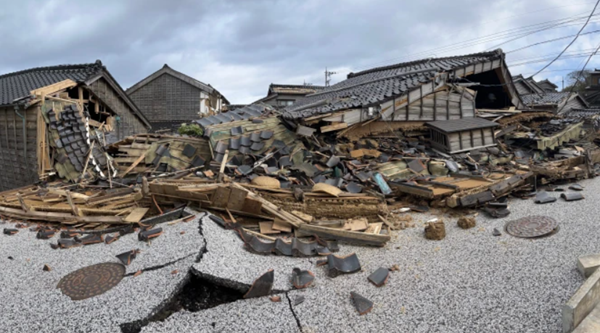In the wake of Thursday’s earthquake, the Japan Meteorological Agency (JMA) has issued a significant advisory under the Nankai Trough Earthquake Extra Information Protocol. This advisory highlights the increased likelihood of a mega earthquake occurring in the anticipated epicentral region of the Nankai Trough.
Increased Earthquake Risk in Nankai Trough Region
The Nankai Trough, a major fault line that runs parallel to the Japanese coast, has long been a concern for seismologists and disaster preparedness authorities. The recent seismic activity has heightened concerns about the potential for a large-scale earthquake, which could have devastating consequences. According to the JMA, the probability of a mega earthquake in this region has now risen above normal levels, prompting the issuance of this advisory.
JMA’s Urgent Call for Disaster Preparedness
In response to this heightened risk, the JMA is urging residents in the affected areas to take immediate disaster-prevention measures. This includes following guidance and instructions from both the government and local municipalities. The agency emphasizes the importance of staying informed through reliable sources and being prepared for any emergency that may arise.
Understanding the Nankai Trough and Its Risks
The Nankai Trough is one of the most seismically active regions in Japan. It lies off the southern coast of Honshu and Shikoku islands and has been the site of numerous historical earthquakes, some of which have caused significant damage. The region is closely monitored by the JMA and other scientific bodies due to the potential for a massive earthquake, often referred to as a “megaquake,” which could trigger tsunamis and result in widespread destruction.
The Nankai Trough is part of a larger subduction zone, where the Philippine Sea Plate is being forced beneath the Eurasian Plate. This tectonic activity creates enormous stress in the Earth’s crust, which is eventually released in the form of earthquakes. Historical records indicate that major earthquakes in this region occur approximately every 100 to 150 years, with the last one, known as the Showa Nankai Earthquake, occurring in 1946.
The Implications of a Mega Earthquake
A mega earthquake in the Nankai Trough region could have catastrophic effects not only on Japan but also on other countries around the Pacific. The seismic energy released in such an event would likely generate massive tsunamis, which could reach far beyond Japan’s shores. Coastal areas would be at extreme risk, and the impact on infrastructure, economy, and human lives could be profound.
The JMA’s advisory serves as a critical reminder of the importance of disaster preparedness. While it is impossible to predict exactly when or where an earthquake will strike, being ready to respond quickly can make a significant difference in reducing the potential for loss of life and property.
Government and Local Municipalities’ Role
The role of the government and local municipalities is crucial in this situation. They are responsible for disseminating accurate information, providing guidance on evacuation procedures, and ensuring that emergency services are ready to respond. The JMA’s advisory has triggered a coordinated effort across various levels of government to ensure that all necessary precautions are in place.
Residents in the affected regions are advised to review their emergency plans, ensure they have access to essential supplies, and stay connected to official communication channels. The JMA has also encouraged people to participate in community drills and to familiarize themselves with the evacuation routes in their areas.
What You Can Do to Stay Safe
For individuals living in or near the Nankai Trough region, there are several steps that can be taken to enhance personal safety:
- Stay Informed: Regularly check updates from the JMA and local authorities. This can include information on seismic activity, evacuation orders, and other emergency advisories.
- Prepare an Emergency Kit: Ensure you have a well-stocked emergency kit that includes water, non-perishable food, first aid supplies, flashlights, and batteries.
- Know Your Evacuation Route: Familiarize yourself with the quickest and safest routes to higher ground or designated evacuation centers.
- Secure Your Home: Take steps to secure heavy furniture and other objects that could become hazards during an earthquake.
- Participate in Drills: Join local community drills to practice your response to an earthquake or tsunami.
Conclusion
The Japan Meteorological Agency’s advisory is a sobering reminder of the ever-present risk of earthquakes in Japan, particularly in the Nankai Trough region. While the timing and exact location of such events remain uncertain, the increased probability of a mega earthquake underscores the need for vigilance and preparedness. By staying informed and taking proactive measures, individuals and communities can help mitigate the impact of a potential disaster.










